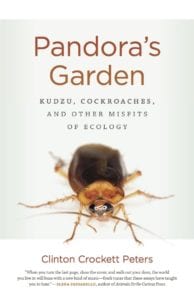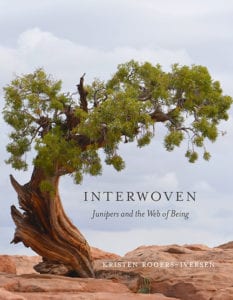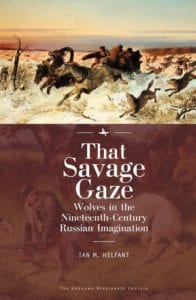Judges have announced the finalists for the 2019 ASLE Book Awards. These book awards in the areas of ecocriticism and environmental creative writing were established in 2007 and are given biennially to recognize excellence in the field.
Winners will be announced in early June, and the official presentation will be at the Authors’ Reception held during the 2019 ASLE Biennial Conference at the University of California, Davis, on June 27, 2019. Eligible submissions are books published by ASLE and international affiliate members since the last awards cycle (2017-2018). Congratulations to our short-listed authors:
ASLE Creative Writing Book Award Finalists
 Rants from the Hill: On Packrats, Bobcats, Wildfires, Curmudgeons, a Drunken Mary Kay Lady, and Other Encounters with the Wild in the High Desert by Michael P. Branch. Shambhala / Roost Books, 2017.
Rants from the Hill: On Packrats, Bobcats, Wildfires, Curmudgeons, a Drunken Mary Kay Lady, and Other Encounters with the Wild in the High Desert by Michael P. Branch. Shambhala / Roost Books, 2017.
This book of place-based, narrative creative nonfiction collects many of the “Rants from the Hill,” 2,000-word essays unified by their focus on the experience of making home in the western Great Basin Desert. The Rants employ a desert rat narrator whose perspective and sensibility produce a unique brand of humor that embraces both the challenges and contradictions inherent in dwelling in the remote high desert.
 Pandora’s Garden: Kudzu, Cockroaches, and Other Misfits of Ecology by Clinton Crockett Peters. University of Georgia Press, 2018.
Pandora’s Garden: Kudzu, Cockroaches, and Other Misfits of Ecology by Clinton Crockett Peters. University of Georgia Press, 2018.
The thematically linked essays profile invasive or unwanted species and examine how humans’ treatment of these creatures reveals how we treat ourselves. Part traditional essay, part nature writing, part lyric, the nineteen pieces of literary nonfiction that make up the book are like the biospheres of the globe; each essay succeeds to the next, blending together like ecotones, creating a microcosm of the world in which we sustain nonhuman lives but also contain them.
 Yellow Crane by Susan Gillis. Brick Books, 2018.
Yellow Crane by Susan Gillis. Brick Books, 2018.
Yellow Crane is a book of many views, many voices. A long look at the changing landscape of a Montreal neighbourhood becomes at once a lament and a love poem. A sequence of poems inspired by Japanese tanka take on the cultural weather, core-drilling into the contradictions and uncertainties of the everyday. Writers, artists, thinkers, cooks, and others congregate in a hammock on the edge of a hayfield to compare notes on what we value. A bear turns up on a path near a quarry.
 Interwoven: Junipers and the Web of Being by Kristen Rogers-Iversen. University of Utah Press, copublished with the Utah State Historical Society, 2017.
Interwoven: Junipers and the Web of Being by Kristen Rogers-Iversen. University of Utah Press, copublished with the Utah State Historical Society, 2017.
Throughout prehistory and history, junipers have influenced ecosystems, cultures, mythologies, economics, politics, and environmental controversies. In terms of their effects on human lives the juniper may be the most significant tree in the interior West. Interwoven explores these interconnecting aspects of junipers. At once a scientific, experiential, historical, and metaphorical walk among junipers and their interrelationships, Interwoven may change readers’ experiences with these trees and the natural world.
 Rising: Dispatches from the New American Shore by Elizabeth Rush. Milkweed Editions, 2018.
Rising: Dispatches from the New American Shore by Elizabeth Rush. Milkweed Editions, 2018.
With every passing day, and every record-breaking hurricane, it grows clearer that climate change is neither imagined nor distant—and that rising seas are transforming the coastline of the United States in irrevocable ways. In Rising, Elizabeth Rush guides readers through some of the places where this change has been most dramatic, from the Gulf Coast to Miami, and from New York City to the Bay Area. For many of the plants, animals, and humans in these places, the options are stark: retreat or perish in place.
 Tides: The Science and Spirit of the Ocean by Jonathan White. Trinity University Press, 2017.
Tides: The Science and Spirit of the Ocean by Jonathan White. Trinity University Press, 2017.
In Tides: The Science and Spirit of the Ocean, writer, sailor and surfer Jonathan White takes readers across the globe to discover the science and spirit of ocean tides. In the Arctic, he shimmies under the ice with an Inuit elder to hunt for mussels in the dark cavities left behind at low tide; in China, he races the Silver Dragon, a twenty-five foot tidal bore that crashes eighty miles up the Qiantang River; in France, he interviews the monks that live in the tide-wrapped monastery of Mont St. Michel; in Chile and Scotland, he investigates the growth of tidal power generation; and in Panama and Venice, he delves into how the threat of sea level rise is changing human culture – the very old and very new.
ASLE Ecocritical Book Award Finalists
Veer Ecology: A Companion to Environmental Thinking, edited by Jeffrey Jerome Cohen and Lowell Duckert. University of Minnesota Press, 2017.
Veer Ecology is a groundbreaking guide for the twenty-first century, with the editors asking thirty brilliant thinkers to each propose one verb that stresses the forceful potential of inquiry, weather, biomes, apprehensions, and desires to swerve and sheer. Each term is accompanied by a concise essay contextualizing its meaning in times of resource depletion, environmental degradation, and global climate change.
 Inhospitable World: Cinema in the Time of the Anthropocene, by Jennifer Fay. Oxford University Press, 2018.
Inhospitable World: Cinema in the Time of the Anthropocene, by Jennifer Fay. Oxford University Press, 2018.
In recent years, environmental and human rights advocates have suggested that we have entered the first new geological epoch since the end of the ice age: the Anthropocene. In this new epoch, humans have come to reshape unwittingly both the climate and natural world; humankind has caused mass extinctions of plant and animal species, polluted the oceans, and irreversibly altered the atmosphere. Ironically, our efforts to make the planet more hospitable to ourselves seem to be driving us toward our inevitable extinction. A force of nature, humanity is now decentered as the agent of history. As Jennifer Fay argues, this new situation is to geological science what cinema has always been to human culture.
 Critical Ecofeminism, by Greta Gaard. Lexington Books, 2017.
Critical Ecofeminism, by Greta Gaard. Lexington Books, 2017.
Australian feminist philosopher Val Plumwood coined the term “critical ecofeminism” to “situate humans in ecological terms and non-humans in ethical terms,” for “the two tasks are interconnected, and cannot be addressed properly in isolation from each other.” Variously using the terms “critical ecological feminism,” “critical anti-dualist ecological feminism,” and “critical ecofeminism,” Plumwood’s work developed amid a range of perspectives describing feminist intersections with ecopolitical issues—i.e., toxic production and toxic wastes, indigenous sovereignty, global economic justice, species justice, colonialism and dominant masculinity.
Critical Ecofeminism advances upon Plumwood’s intellectual, activist, and scholarly work by exploring its implications for a range of contemporary perspectives and issues–critical animal studies, plant studies, sustainability studies, environmental justice, climate change and climate justice, masculinities and sexualities. With the insights available through a critical ecofeminism, these diverse eco-justice perspectives become more robust.
 Peregrinations: Walking in American Literature, by Amy T. Hamilton. University of Nevada Press, 2018.
Peregrinations: Walking in American Literature, by Amy T. Hamilton. University of Nevada Press, 2018.
The land of the United States is defined by vast distances encouraging human movement and migration on a grand scale. Consequently, American stories are filled with descriptions of human bodies walking through the land. In Peregrinations, Amy T. Hamilton examines stories told by and about Indigenous American, Euroamerican, and Mexican walkers. Walking as a central experience that ties these texts together—never simply a metaphor or allegory—offers storytellers and authors an elastic figure through which to engage diverse cultural practices and beliefs including Puritan and Catholic teachings, Diné and Anishinaabe oral traditions, Chicanx histories, and European literary traditions.
 That Savage Gaze: Wolves in Nineteenth Century Russian Imagination, by Ian M. Helfant. Academic Studies Press, 2018.
That Savage Gaze: Wolves in Nineteenth Century Russian Imagination, by Ian M. Helfant. Academic Studies Press, 2018.
Imperial Russia’s large wolf populations were demonized, persecuted, tormented, and sometimes admired. That Savage Gaze explores the significance of wolves in pre-revolutionary Russia utilizing the perspectives of cultural studies, ecocriticism, and human-animal studies. It examines the ways in which hunters, writers, conservationists, members of animal protection societies, scientists, doctors, government officials and others contested Russia’s “Wolf Problem” and the particular threat posed by rabid wolves. It elucidates the ways in which wolves became intertwined with Russian identity both domestically and abroad. It argues that wolves played a foundational role in Russians’ conceptions of the natural world in ways that reverberated throughout Russian society, providing insights into broader aspects of Russian culture and history as well as the opportunities and challenges that modernity posed for the Russian empire.
 Naturalizing Africa: Ecological Violence, Agency, and Postcolonial Resistance in African Literature, by Cajetan Iheka. Cambridge University Press, 2017.
Naturalizing Africa: Ecological Violence, Agency, and Postcolonial Resistance in African Literature, by Cajetan Iheka. Cambridge University Press, 2017.
The problem of environmental degradation on the African continent is a severe one. In this book, Cajetan Iheka analyses how African literary texts have engaged with pressing ecological problems in Africa, including the Niger Delta oil pollution in Nigeria, ecologies of war in Somalia, and animal abuses. Analysing narratives by important African writers such as Amos Tutuola, Wangari Maathai, J. M. Coetzee, Bessie Head, and Ben Okri, Iheka challenges the tendency to focus primarily on humans in the conceptualization of environmental problems, and instead focuses on how African literature demonstrates the interconnection and ‘proximity’ of human and nonhuman beings. Through this, Iheka ultimately proposes a revision of the idea of agency based on human intentionality in African literary studies and postcolonialism: that texts yoke the exploitation of Africans to the despoliation of the environment, and they recommend responsibility toward human and nonhuman beings as crucial for ecological sustainability and addressing climate change.
 The Natural History of Sexuality in Early America, by Greta Lafleur. Johns Hopkins University Press, 2018.
The Natural History of Sexuality in Early America, by Greta Lafleur. Johns Hopkins University Press, 2018.
At the heart of this book is the question of how to produce a history of sexuality for an era in which modern vocabularies for sex and desire were unavailable. LaFleur demonstrates how environmental logic was used to explain sexual behavior on a broad scale, not just among the educated elite who wrote and read natural historical texts. Reading popular print alongside contemporary natural historical writing, LaFleur reunites the history of sexuality with the history of race, demonstrating how they were bound to one another by the emergence of the human sciences in the eighteenth century. Ultimately, The Natural History of Sexuality in Early America not only rewrites all dominant scholarly narratives of early sexual behavior but also poses a major intervention into queer theoretical understandings of the relationship between sex and the subject.
 The Flood Year 1927, by Susan Scott Parrish. Princeton University Press, 2017.
The Flood Year 1927, by Susan Scott Parrish. Princeton University Press, 2017.
The Great Mississippi Flood of 1927, which covered nearly thirty thousand square miles across seven states, was the most destructive river flood in U.S. history. Due to the speed of new media and the slow progress of the flood, this was the first environmental disaster to be experienced on a mass scale. As it moved from north to south down an environmentally and technologically altered valley, inundating plantations and displacing more than half a million people, the flood provoked an intense and lasting cultural response. The Flood Year 1927 draws from newspapers, radio broadcasts, political cartoons, vaudeville, blues songs, poetry, and fiction to show how this event took on public meanings.
 Bad Environmentalism: Irony and Irreverence in the Ecological Age, by Nicole Seymour. University of Minnesota Press. 2018.
Bad Environmentalism: Irony and Irreverence in the Ecological Age, by Nicole Seymour. University of Minnesota Press. 2018.
Activists today strive to educate the public about climate change, but sociologists have found that the more we know about alarming issues, the less likely we are to act. Meanwhile, environmentalists have acquired a reputation as gloom-and-doom killjoys. Bad Environmentalism identifies contemporary texts that respond to these absurdities and ironies through absurdity and irony—as well as camp, frivolity, irreverence, perversity, and playfulness.
Nicole Seymour develops the concept of “bad environmentalism”: cultural thought that employs dissident affects and sensibilities to reflect critically on our current moment and on mainstream environmental activism. From the television show Wildboyz to the short film series Green Porno, Seymour shows that this tradition of thought is widespread—spanning animation, documentary, fiction film, performance art, poetry, prose fiction, social media, and stand-up comedy since at least 1975. Seymour argues that these texts reject self-righteousness and sentimentality, undercutting public negativity toward activism and questioning basic environmentalist assumptions: that love and reverence are required for ethical relationships with the nonhuman and that knowledge is key to addressing problems like climate change.
